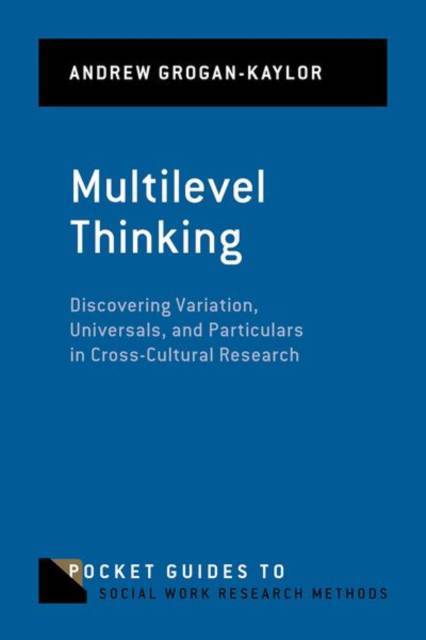
- Afhalen na 1 uur in een winkel met voorraad
- Gratis thuislevering in België vanaf € 30
- Ruim aanbod met 7 miljoen producten
- Afhalen na 1 uur in een winkel met voorraad
- Gratis thuislevering in België vanaf € 30
- Ruim aanbod met 7 miljoen producten
Zoeken
Multilevel Thinking
Discovering Variation, Universals, and Particulars in Cross-Cultural Research
Andrew Grogan-Kaylor
€ 64,45
+ 128 punten
Omschrijving
Multilevel models have become very common in social research, however, there are aspects of these models that are explored only infrequently. Those that rarely make their way into courses and training materials are published articles that appear in academic journals. The author's view is that multilevel modeling offers powerful tools for understanding the multilevel data that social researchers often confront. For example, researchers are often interested in studying outcomes for diverse groups of children in different schools, residents of diverse and different neighborhoods, or individuals or families living in diverse and different countries. Such inherently multilevel data lead to analytic complexities, some of which might be well understood, while others seem to be much less often appreciated. This book offers an accessible tutorial for applied researchers, especially those who see their research having some advocacy based component. The approach of this book, while offering up some equations, is less mathematically rigorous than some of the existing texts, and written with the intent of providing a clear and practically focused guide for the applied researcher who is attempting to carry out better research with diverse populations.
Specificaties
Betrokkenen
- Auteur(s):
- Uitgeverij:
Inhoud
- Aantal bladzijden:
- 208
- Taal:
- Engels
- Reeks:
Eigenschappen
- Productcode (EAN):
- 9780197806463
- Verschijningsdatum:
- 23/07/2025
- Uitvoering:
- Paperback
- Formaat:
- Trade paperback (VS)
- Afmetingen:
- 142 mm x 210 mm
- Gewicht:
- 235 g

Alleen bij Standaard Boekhandel
+ 128 punten op je klantenkaart van Standaard Boekhandel
Beoordelingen
We publiceren alleen reviews die voldoen aan de voorwaarden voor reviews. Bekijk onze voorwaarden voor reviews.








